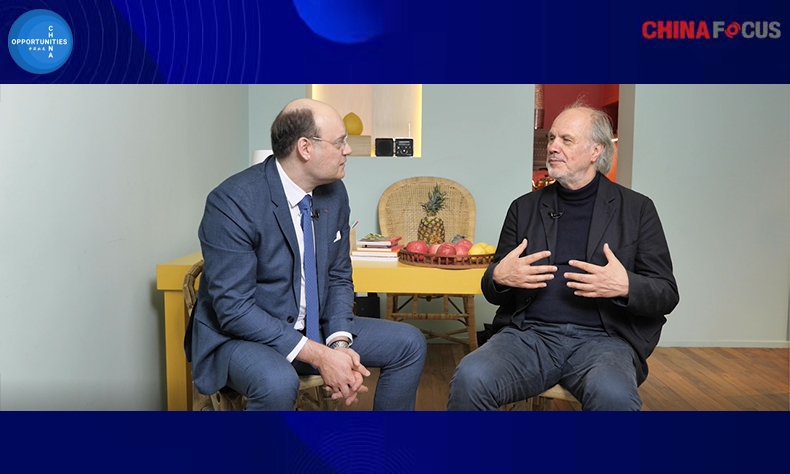
China Opportunities: Designed for Sustainability and Happiness
China is the land of opportunity at different levels. I mean today, since a long time, a lot of architecture and design is being done in China.
Editor’s Note: Chin’s development can be seen in every aspect. How do international people see China’s opportunities? David Gosset, the founder of Europe-China Forum, discussed with Aldo Cibic, Italian designer, founder of CibicWorkshop, Honorary Professor at Tongji University, and Honorary Professor of Urban Studies at Shanghai Academy of Social Sciences. His projects have been presented at the Venice Architecture Biennale. His design pieces and drawings are exhibited in the permanent collections of prestigious museums such as the Stedelijk Museum in Amsterdam, the Centre Pompidou in Paris, etc.
China Opportunities, hosted by David Gosset, is a global dialogue with senior officials, business elites and distinguished people. The serial interviews are coproduced by China Focus and DG2CI Limited in association with Academy of Contemporary China and World Studies.
David Gosset: Aldo, you are a very happy man. Can design make us happy?
Aldo Cibic: Design is very important to make happy. You know, we are in my home, and my home makes me happy. And it’s all starting this time from this home, because also being in this country, I’d like to bring more the culture of how to enjoy home. So basically, to me, “design to be happy” is, one is home, and the other level that I love and I’m going very much now through the type of, the typology of design is public design – what you do in the street that a kid grows seeing something that makes him happy and is a memory forever. So, home and public design, this is the two elements that I love the most, not architecture, not other things, just what you leave inside your heart, your soul.
David Gosset: We are in your home, but as a very famous designer, you made a lot of exhibitions, and one of them is titled “Aesthetics of Vitality”. Can you tell us more about this relationship between design and this aesthetics of vitality?
Aldo Cibic: Somehow it follows the first question, because I mean I like when the design brings you joy, brings you a sense of poetic. So basically, vitality is everything that is related really to life, to what you experience, to how you bring something positive, something that gives you something, not something that is just, I want you to show me, but that’s how somebody sees something and how you create the relation between the design and the action of the people related to the design, is what I call vitality somehow.
David Gosset: Wonderful. Of course, we are in your home. But you home is in Shanghai, and Shanghai is a very important part of China, of course. Would you say that China is a land of opportunities for architects or designers across the world?
Aldo Cibic: China is the land of opportunity at different levels. I mean today, since a long time, a lot of architecture and design is being done in China, in Shanghai. But what we have to look is to look at the future, so, to look at Shanghai as the land of opportunity for the future, because it’s from here that we have, because of the quantity of people and because of the importance of Shanghai today, to me, it’s the most interesting city of the world, honestly, it’s what I think. We have to show all the idea of how to be respectful on the environment in everything we do for the future in architecture and design, starting from here.
David Gosset: A very last point. If I tell you that less is more, would you agree with that, as a way to introduce to the way you design?
Aldo Cibic: It’s not enough in the sense that there is a richness, which is not less, there is a richness from inside, a richness that you want to transmit, that the people can enjoy from inside. That is beyond “less is more”. I did another title another time, which was “More with Less”.
David Gosset: Wonderful. But in a sense, very often, we can say that less is more, I would argue. Therefore, I will stop here this conversation. But before we stop, I would like to thank you for your hospitality and for what you are doing to make us happy through your design. Thank you very much.
Aldo Cibic: Thank you so much. Thank you so much.
 Facebook
Facebook
 Twitter
Twitter
 Linkedin
Linkedin
 Google +
Google +




